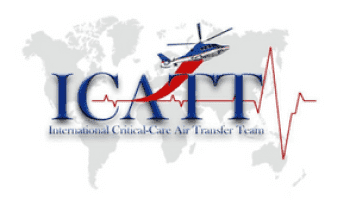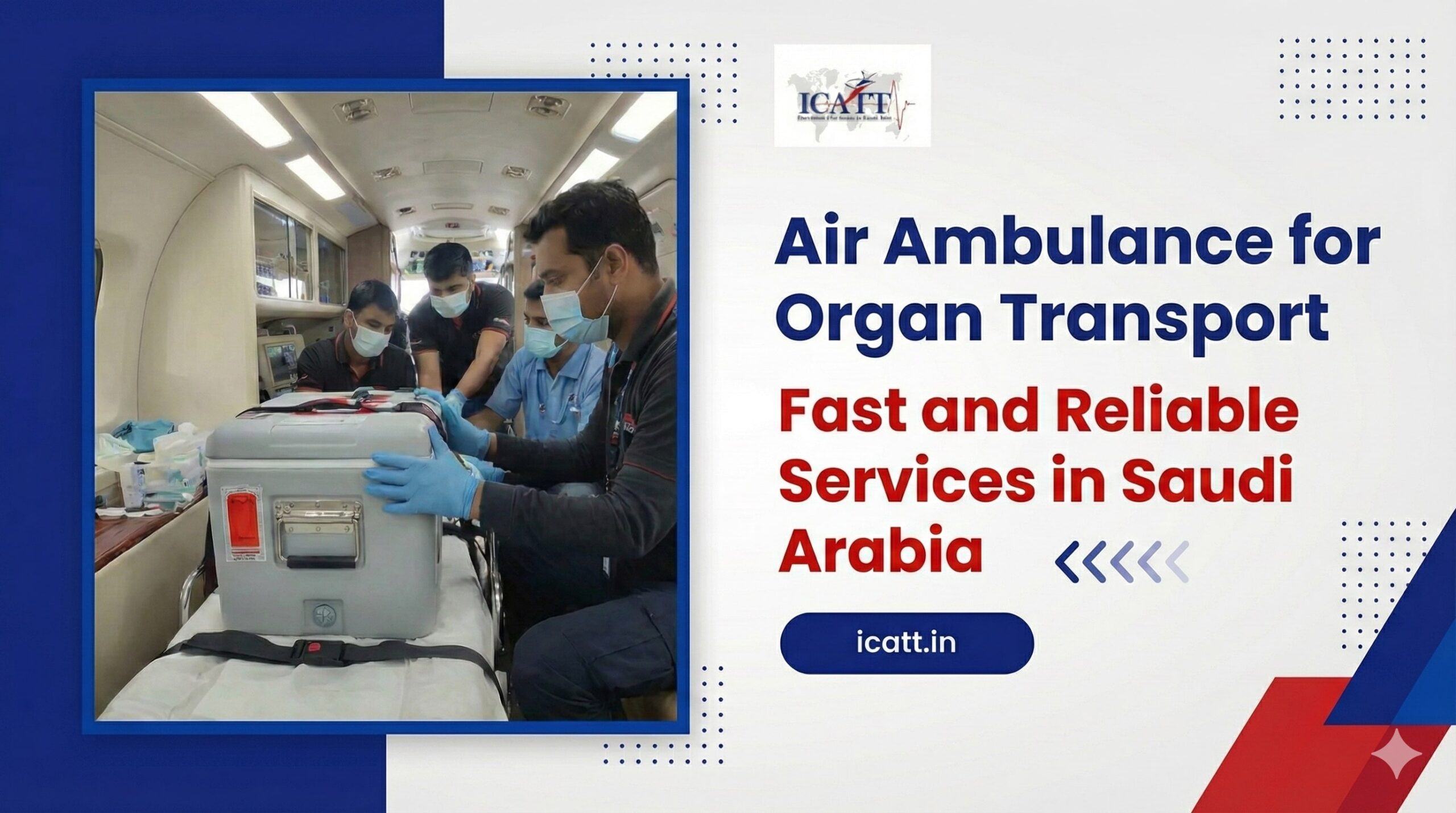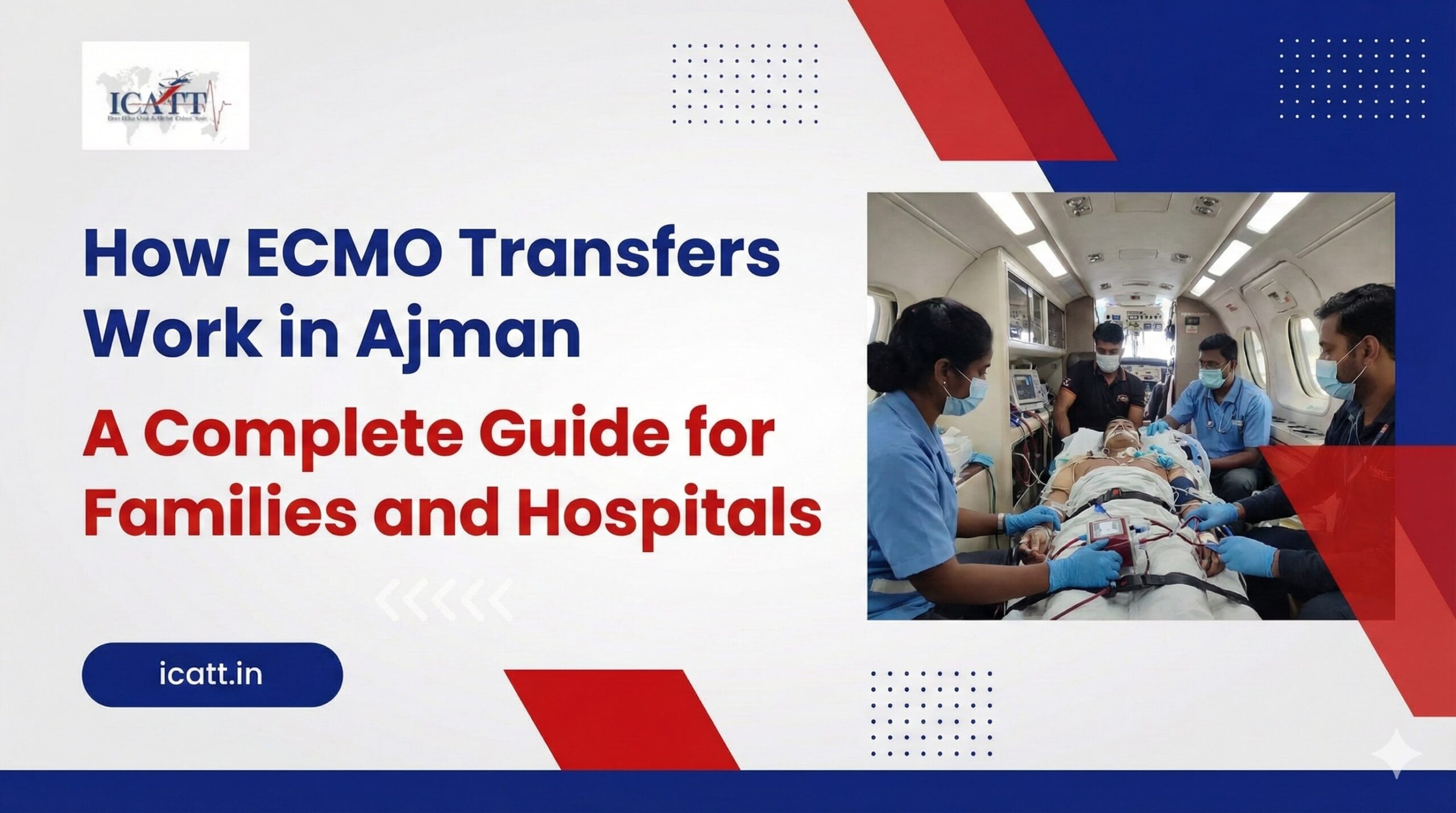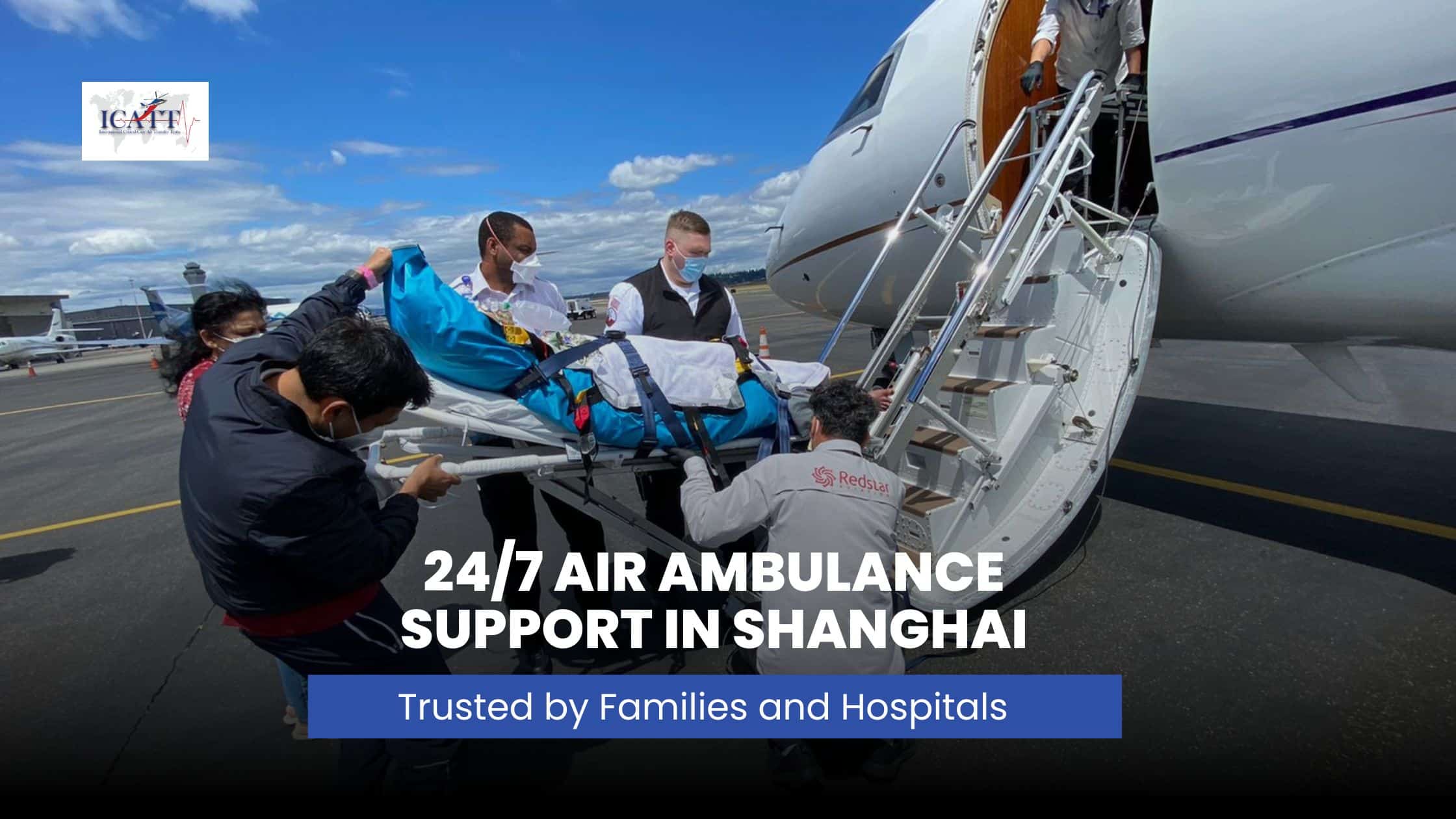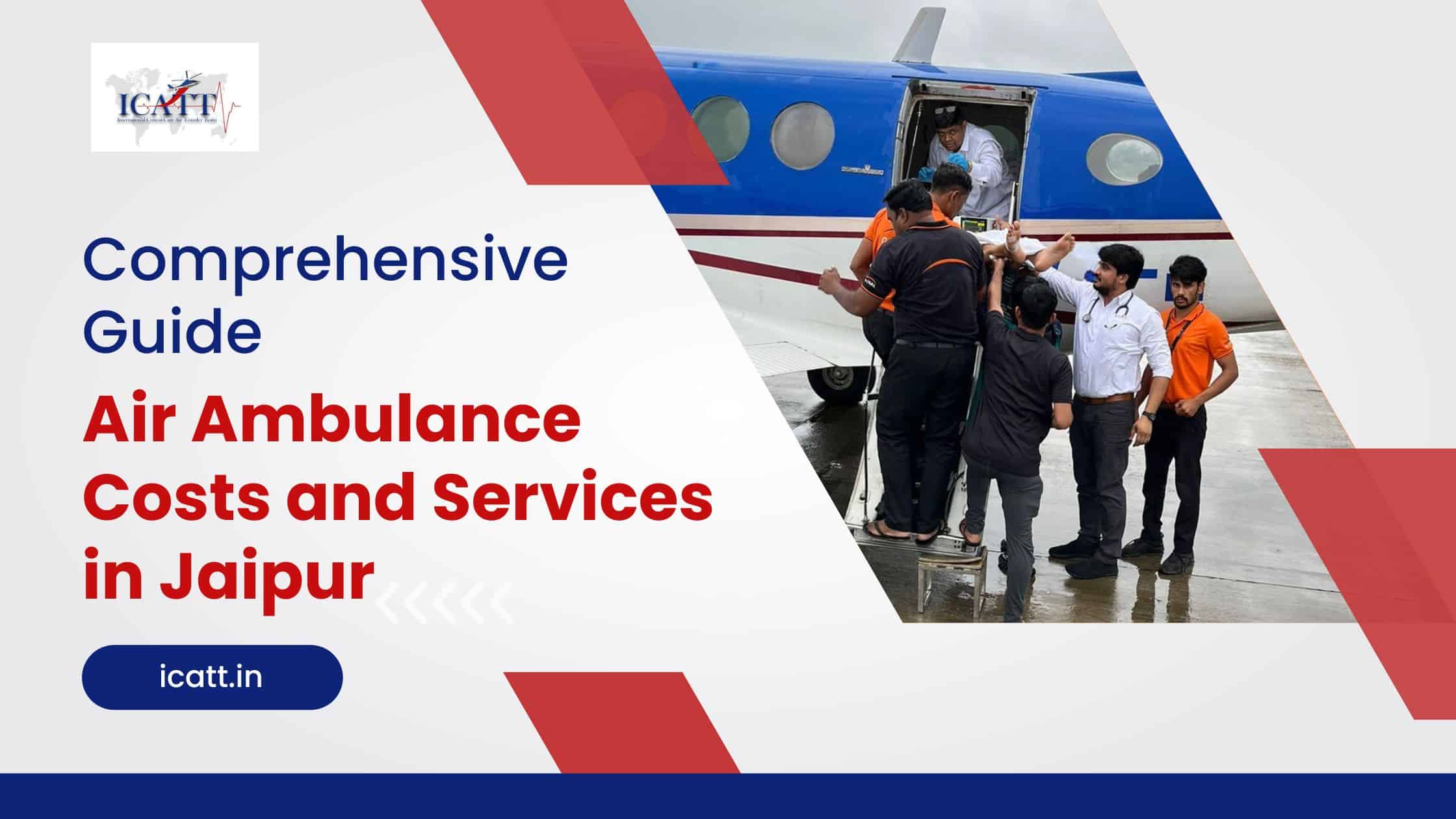We all know that brain injuries are among the most time-sensitive medical emergencies, and even doctors agree that such cases simply cannot wait. Whether it’s caused by a road accident, a fall, a stroke, or a sudden aneurysm, every minute without the right medical attention can drastically increase the risk of long-term disability or, worse, loss of life.
Science tells us that brain cells can start dying within minutes if oxygen supply is interrupted. On top of that, swelling or bleeding in the brain can worsen rapidly, making the situation even more critical.
This is where the real challenge comes in, and many families have faced the heartbreaking reality that ground transport isn’t always fast enough or equipped to manage severe neurological cases, especially when the hospital with advanced neurosurgical facilities is far away. Over the years, ICATT has witnessed this gap and worked relentlessly to make people aware of the life-saving role of Air Ambulance Services for Neurological Emergencies.
A trusted air ambulance provider doesn’t just transport patients; it ensures they reach the right hospital in the shortest possible time while receiving uninterrupted, ICU-level mid-air care. It’s about speed, yes, but it’s equally about sustaining life until the patient is in the hands of a specialized neurosurgical team.
When every second counts, an air ambulance can truly be the deciding factor between survival, long-term recovery, or permanent damage.
Understanding Brain Injuries: Why Speed Matters?
Just like any other injuries, even brain injury can vary in type and severity, but the one common thing that they all share is the urgent need for immediate intervention. That means the urgent need to get the right medical care and transport to the right facility on time.
Common types of brain injuries include:
- Traumatic Brain Injury (TBI): One of the most common brain injuries, often caused by road accidents, falls, or sports-related impacts.
- Stroke: Today, a large number of brain injury cases are actually strokes, which are either ischemic (caused by a blockage in the brain’s blood flow) or hemorrhagic (caused by bleeding in the brain). Both require immediate action to prevent irreversible damage.
- Other Neurological Emergencies: This includes aneurysms, severe seizures, and brain swelling due to infection or oxygen deprivation.
All of these are common yet highly time-sensitive conditions. For many brain injuries, doctors often talk about a “golden window” the short, crucial period after the injury when quick treatment can help prevent long-term complications. In neurological emergencies, this window can be even shorter. Any delay in transferring the patient to a hospital with the right specialists, advanced neuro care units, and the right technology can drastically affect recovery and survival outcomes.
Ground ambulances are often slowed by traffic, long distances, or limited medical equipment. Medical evacuation services by air overcome these barriers by providing a faster, smoother, and better-equipped mode of transport.
How Air Ambulance Services Help in Neurological Emergencies?
This is one of the most common questions people ask: How are air ambulance services more helpful in neurological emergencies? Also, more importantly, how do they really make a difference compared to ground ambulances?
The answer is a strong yes, and here’s why:
- Speed of Transfer
When it comes to brain injuries, time isn’t just important; it’s life itself. The difference between recovery and lifelong damage can be just a matter of minutes. Air ambulances cover in minutes what might take hours by road. This speed ensures patients reach advanced neurological centers well within the critical treatment window.
- Specialized Medical Equipment Onboard
Unlike most road ambulances, which often have limited space and resources, air ambulances are equipped like flying ICUs. They carry advanced, ICU-grade systems such as:
- Ventilators for assisted breathing
- Cardiac monitors
- Portable suction units
- Oxygen therapy equipment
- Infusion pumps for precise medication delivery
- Intracranial pressure (ICP) monitors for critical brain injury cases
This means life-saving treatment doesn’t wait for the hospital, but it begins mid-air.
- Expert Neurological Care During Flight
Equipment is only as good as the hands that operate it. Air Ambulance Services for Neurological Emergencies have dedicated, highly trained medical teams onboard, often including critical care doctors, paramedics, or even neurosurgeons. They are skilled in managing seizures, controlling bleeding, and keeping brain pressure stable throughout the journey.
- Direct Access to Specialist Hospitals
Ground ambulances face challenges like traffic, poor road conditions, and time-consuming patient transfers between vehicles. Whereas air ambulances can land directly at or near hospitals with neurosurgery facilities, eliminating delays and ensuring direct, rapid access to specialized care.
ICATT, the reliable air ambulance provider, not only shortens the travel time but also starts necessary treatments en route, giving the patient a better chance at recovery.
The Role of Air Ambulance Provider in Brain Injury Transfers
If you think all air ambulance services are the same, think again. The truth is, they are not. The quality of care, onboard facilities, experience of the crew, and readiness of the air ambulance provider can make a life-or-death difference in patient outcomes. A dependable provider will:
- Operate 24/7 with rapid response times
- Coordinate directly with both the sending and receiving hospitals
- Have a medical team experienced in neurological emergencies
- Offer both domestic and international transfers
- Be able to customize in-flight care for specific conditions such as having a neurosurgeon or anesthetist onboard if needed
In emergencies, this coordination ensures that treatment begins as soon as the patient is in the air and continues seamlessly upon arrival. This is exactly what we give at ICATT. At ICATT, we make sure treatment doesn’t just start at the hospital but it begins the moment the patient is in the air and continues seamlessly until they reach the destination. Our team stays in constant contact with both the sending and receiving medical facilities, keeps families informed at every step, and ensures the right experts are on board. This way, every second is used to give the patient the best possible chance of recovery.
How Medical Evacuation Services Ensure Seamless Transfers
Medical evacuation services are not just about flying a patient from one place to another. They involve an entire chain of coordinated actions:
- Patient Pickup: Safe transport from the accident site or current hospital to the nearest airstrip or helipad.
- In-Flight Critical Care: Continuous monitoring and active treatment during the journey.
- Hospital Handover: Direct transfer to the care of specialists at the destination hospital.
- Documentation & Permissions: Handling all necessary paperwork, especially for cross-border transfers.
For example, a stroke patient in a small town may need a procedure like a thrombectomy, available only in major metro hospitals. With air transfer, the patient can be moved within 90 minutes, ensuring they are treated before the damage becomes irreversible.
This is why medical evacuation services are trusted in remote areas, offshore locations, and even during international emergencies.
Common Scenarios Where Air Ambulances Save Brain Injury Patients
- Road Accidents in Remote Areas: Quick evacuation to trauma centers.
- Stroke in Rural Towns: Transfer to advanced stroke units for clot removal or bleeding control.
- Industrial or Workplace Injuries: Fast transport to specialist hospitals.
- Sports or Adventure Accidents: Rapid evacuation from hilly or inaccessible terrains.
- International Transfers: Bringing patients from countries with limited neurosurgical facilities to advanced care centers abroad.
FAQs on Air Ambulance Services for Brain Injuries
- How quickly can Air Ambulance Services for Neurological Emergencies be arranged?
Most providers can arrange a flight within 1–3 hours of the request, depending on location and permissions. At ICATT we ensure as soon as the query is raised, our team collects all the information and then arranges the ambulance accordingly. - Is an air ambulance safe for brain injury patients with unstable vitals?
Yes, when managed by an experienced medical crew with the right equipment, air transfer is safe even for critical patients. - How much does an air ambulance for neurological emergencies cost in India?
Costs vary based on distance, aircraft type, and medical needs, but providers can give quick estimates for planning. - Can an air ambulance provider arrange international transfers for brain injury patients?
Yes, at ICATT we handle cross-border medical evacuations, including visas and clearances. - What’s included in medical evacuation services for brain injuries?
Services include ground-to-air transfer, in-flight ICU care, hospital coordination, and complete documentation handling.
Hence, brain injuries demand fast, precise, and specialized intervention. Delays can mean the difference between recovery and lifelong impairment. Air Ambulance Services for Neurological Emergencies bridge the gap between where the patient is and where they need to be in the shortest possible time, with life-saving care every step of the way.
A trusted air ambulance provider is more than just a transport service; they are an emergency partner, ready to respond when every second counts. With the right medical evacuation services, patients can receive timely, expert care, no matter where they are.
For more information about ICATT services or to know more about air ambulance services at ICATT contact the team or email us your queries
